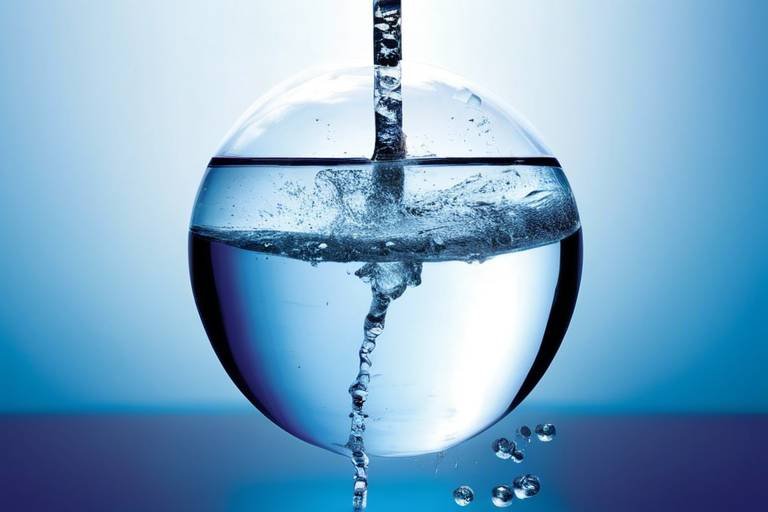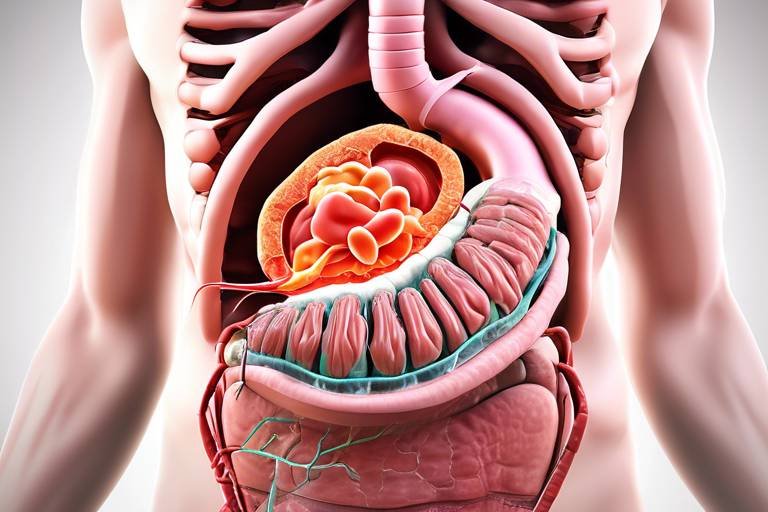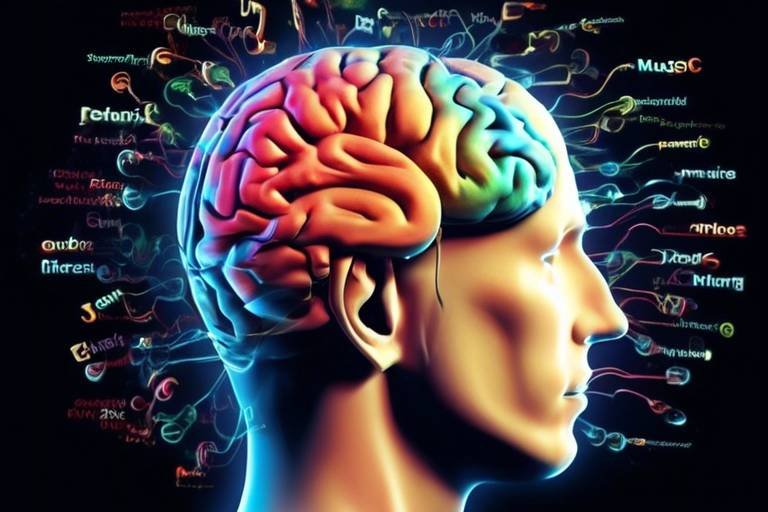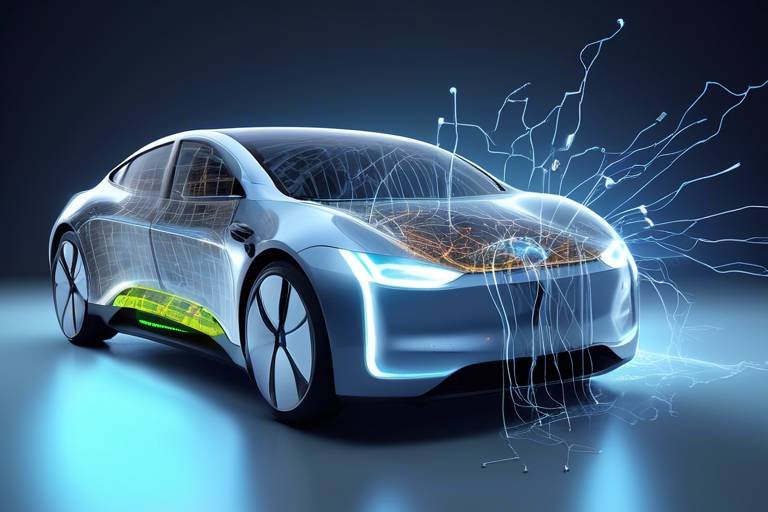The Physics of Weightlessness - What Astronauts Experience
Have you ever wondered what it’s like to float among the stars, free from the pull of gravity? The experience of weightlessness is one of the most fascinating aspects of space travel, and it’s not just about floating freely; it’s a complex interplay of physics that can boggle the mind. When astronauts venture into space, they encounter a unique environment that challenges their understanding of movement, balance, and even their own bodies. In this article, we will explore the science behind weightlessness, the sensations astronauts experience, and the profound effects of microgravity on both the body and mind.
Gravity is the invisible force that pulls objects toward each other. On Earth, it gives us weight and keeps us grounded. Picture gravity as a giant magnet, constantly tugging at everything with mass. But what happens when you leave the comforting embrace of Earth’s gravity? In space, gravity is still present, but its effects are different. For instance, the International Space Station (ISS) orbits Earth at a height where gravity is about 90% as strong as it is on the surface. So, why do astronauts feel weightless? The answer lies in the concept of free fall.
Microgravity is a term used to describe the condition where objects appear to be weightless. This doesn’t mean that gravity has vanished; rather, it’s greatly diminished in effect due to the continuous free-fall motion of the spacecraft. Imagine being on a roller coaster, where at the peak of a drop, you feel that exhilarating moment of weightlessness. In space, astronauts are in a constant state of free fall, which creates the sensation of floating. This state is achieved in spacecraft and space stations through careful design and orbital mechanics.
When a spacecraft is in orbit, it is essentially falling toward Earth while simultaneously moving forward at a high speed. This creates a scenario where everything inside the spacecraft, including the astronauts, is falling at the same rate. This phenomenon is what leads to the sensation of weightlessness. It’s like jumping off a diving board; for a brief moment, you are weightless before gravity pulls you back down. In space, this sensation lasts for hours, days, or even months, depending on the mission.
The speed and trajectory of a spacecraft are vital in creating microgravity. When a spacecraft travels at approximately 17,500 miles per hour, it is in a delicate balance between the force of gravity pulling it toward Earth and its forward momentum trying to escape that pull. This balance is what keeps the spacecraft in orbit and creates the unique conditions for weightlessness. It’s a bit like swinging a ball on a string; as long as you keep the ball moving, it won’t fall to the ground.
Understanding how microgravity differs from Earth’s gravity is essential for grasping the astronaut experience. On Earth, gravity pulls us down, making us feel heavy and firmly anchored. In contrast, in microgravity, astronauts float effortlessly, experiencing a sense of freedom and disorientation. For example, when drinking from a cup in space, liquids form floating blobs instead of pouring out. This fundamental difference in how gravity operates leads to unique challenges and experiences for astronauts.
The absence of gravity has profound physiological effects on the human body. Astronauts often experience muscle atrophy and bone density loss due to the lack of gravitational resistance. Imagine your muscles and bones as rubber bands; without regular stretching and use, they lose their elasticity and strength. Additionally, fluid distribution in the body changes, causing facial puffiness and other unexpected effects. Understanding these changes is crucial for maintaining astronaut health during missions.
Weightlessness doesn’t just affect the body; it also impacts psychological well-being. Astronauts face mental challenges such as stress, isolation, and altered sensory perceptions. Being confined in a small space with limited social interaction can be daunting, leading to feelings of loneliness. Furthermore, the disorientation caused by microgravity can affect spatial awareness and balance, adding to the psychological strain. It’s essential to address these issues to ensure astronauts remain mentally fit during their missions.
To thrive in microgravity, astronauts undergo extensive training. This preparation includes simulations that mimic the weightlessness of space, allowing them to acclimate to their new environment. Techniques such as visualization and mindfulness are employed to help astronauts manage the psychological effects of space travel. Just like athletes train for their sport, astronauts must prepare their minds and bodies for the unique challenges of space.
Long-term exposure to microgravity can lead to various health issues. Research indicates that extended missions can result in significant changes to the cardiovascular system, vision, and even gene expression. To combat these potential risks, scientists are developing countermeasures such as exercise regimens and nutritional strategies to keep astronauts healthy during their time in space. The journey to understanding the effects of weightlessness is ongoing, but it’s crucial for the future of space exploration.
- What is weightlessness? Weightlessness is the sensation experienced when in a state of free fall, where the effects of gravity are not felt as they are on Earth.
- How do astronauts eat in space? Astronauts eat specially prepared foods that are packaged to prevent crumbs and spills, which can be problematic in microgravity.
- Can astronauts sleep in space? Yes, astronauts can sleep in space, but they often use sleeping bags attached to the walls to prevent floating around while they rest.

Understanding Gravity
Gravity is one of the most fundamental forces in the universe, acting on all matter, large and small. It’s the invisible hand that keeps our feet firmly planted on the ground and governs the motion of planets, stars, and galaxies. But what exactly is gravity, and how does it operate differently on Earth compared to the vastness of space? Let's break it down.
On Earth, gravity pulls objects toward the center of the planet with a force that gives us weight. This force is approximately 9.81 m/s², meaning that for every second an object falls, its speed increases by about 9.81 meters per second. This constant acceleration is what we feel as weight. Imagine holding an apple in your hand; it feels heavy because gravity is pulling it down toward the Earth. Now, picture an astronaut floating in space, holding that same apple. In that scenario, the apple would appear to be weightless, and so would the astronaut. Why? That’s where the magic of microgravity comes into play.
In space, particularly in low Earth orbit, gravity is still present but feels different. The sensation of weightlessness that astronauts experience is due to the fact that they are in a state of free fall. This means that both the astronaut and their spacecraft are falling towards Earth at the same rate, creating a scenario where they do not feel the effects of gravity, even though it is still acting upon them. It’s like being in a roller coaster that has just dropped; you feel that moment of weightlessness, even though you are still affected by gravity.
To illustrate this difference, consider the following table:
| Location | Gravity (m/s²) | Sensation of Weight |
|---|---|---|
| Earth's Surface | 9.81 | Normal Weight |
| Low Earth Orbit | 8.7 | Weightless |
| Moon's Surface | 1.62 | Light Weight |
As we can see, while gravity is weaker in low Earth orbit than on the surface of the Earth, it is still significant enough to keep spacecraft in orbit. This difference in gravitational pull leads to an extraordinary phenomenon known as microgravity. In this environment, astronauts can float, perform experiments, and experience their bodies in ways that are simply impossible on Earth.
Understanding gravity is crucial not just for astronauts but for scientists and researchers who study the effects of microgravity on various physical and biological processes. It helps us grasp the challenges that come with long-duration space travel and opens up avenues for innovations in technology and medicine. So the next time you look up at the stars, remember that gravity is the silent force that keeps everything in its place, even as it allows for the breathtaking dance of celestial bodies across the universe.

The Concept of Microgravity
When we talk about microgravity, we're diving into a world where the usual rules of physics seem to take a backseat. Microgravity is not just a fancy term for being weightless; it's a state where the gravitational forces acting on objects are so small that they appear to float. Imagine being in a car that’s constantly falling off a cliff—everything inside, including you, would feel weightless as you all fall at the same rate. This is essentially what happens in space, where astronauts experience microgravity.
In space, microgravity is achieved primarily through the concept of free fall. When a spacecraft orbits the Earth, it is in a continuous state of falling towards the planet. However, because it also has a forward motion, it keeps missing the Earth, creating a scenario where everything inside the spacecraft feels like it’s floating. This sensation can be likened to being on a roller coaster, where the moment you drop down a steep slope, you feel that exhilarating rush of weightlessness. The thrill is real, but it’s also a scientific marvel!
Now, you might be wondering how microgravity is different from the gravity we experience on Earth. To clarify, let's break it down:
- Gravity on Earth: The force that pulls us towards the ground, keeping us firmly planted.
- Microgravity: A condition where the effects of gravity are still present but are drastically reduced, leading to the sensation of floating.
Microgravity can be experienced in various settings, but the most notable is aboard the International Space Station (ISS). The ISS orbits Earth at a speed of about 28,000 kilometers per hour (17,500 miles per hour), which allows it to maintain this state of microgravity. Astronauts aboard the ISS can conduct experiments that would be impossible under the influence of Earth's gravity, from studying fluid dynamics to observing the behavior of flames. The unique conditions of microgravity open up a whole new frontier for scientific exploration.
Furthermore, microgravity isn’t just a one-size-fits-all phenomenon. It varies depending on several factors, including the altitude of the spacecraft and its velocity. For instance, while the ISS experiences microgravity, it is not completely devoid of gravitational effects. In fact, the gravitational pull at the ISS is about 90% of what we feel on Earth. This slight difference is why astronauts can still experience some effects of gravity, albeit significantly reduced.
In summary, microgravity is a fascinating state that allows astronauts to float freely, conduct groundbreaking research, and experience the wonders of space in ways that challenge our understanding of physics. It is a reminder that our universe is full of surprises, and sometimes, the most extraordinary experiences come from defying the very forces that keep us grounded.

Free Fall and Weightlessness
When we think about the concept of weightlessness, it often conjures up images of astronauts floating effortlessly in their spacecraft, but the reality behind this phenomenon is rooted in the physics of free fall. In essence, weightlessness is experienced when an object is in a state of free fall, which occurs when the only force acting upon it is gravity. This might sound a bit counterintuitive at first, but let’s break it down.
Imagine you're in an elevator that suddenly plummets downwards. For that brief moment, as the elevator descends, you feel as if you’re floating—your body is falling at the same rate as the elevator itself. This sensation is similar to what astronauts experience in space. When a spacecraft is in orbit around the Earth, it is essentially in a continuous state of free fall. The spacecraft is falling towards the Earth due to gravity, but because it also has a significant horizontal velocity, it keeps missing the Earth. This creates a perfect balance where everything inside the spacecraft, including the astronauts, experiences microgravity.
To further illustrate this, let’s use a simple analogy: think of a roller coaster. As the ride peaks and begins to descend, there’s a moment when you feel that exhilarating rush of weightlessness. This is because, for that split second, the force pushing you into your seat disappears as you and the coaster are both falling at the same rate. In space, this feeling is constant, as astronauts are perpetually in this state of free fall.
Now, you might wonder: how does this free fall differ from what we experience on Earth? On our planet, we are constantly fighting against the force of gravity, which pulls us downwards and gives us our weight. However, in space, gravity is still present; it just doesn’t feel the same due to the orbital motion of the spacecraft. The sensation of weightlessness can be quite liberating, allowing astronauts to float, twist, and turn in ways that are impossible on Earth. This unique environment gives them the opportunity to conduct experiments and perform tasks in ways that would be unthinkable under the influence of gravity.
In summary, the sensation of weightlessness experienced by astronauts is a fascinating byproduct of free fall. It’s a delicate dance between gravity and motion, creating an environment where the rules of physics seem to bend. Understanding this concept not only helps us appreciate the incredible experiences astronauts have in space but also opens up a world of possibilities for scientific exploration and discovery.
- What causes weightlessness in space? Weightlessness occurs in space when an object is in a state of free fall. This happens when the object is moving at a speed that allows it to continuously fall towards the Earth without actually hitting it.
- Do astronauts feel weightless all the time? Yes, astronauts feel weightless while in orbit because they are in a continuous state of free fall, which creates the sensation of microgravity.
- How does microgravity affect the human body? Microgravity can lead to changes in muscle and bone density, fluid distribution, and can even impact vision and cardiovascular health.

The Role of Orbital Motion
When we think about space travel, it's easy to picture astronauts floating around in their spacecraft, but have you ever stopped to wonder why they experience this incredible sensation of weightlessness? The answer lies in the concept of orbital motion. Essentially, when a spacecraft is in orbit around the Earth, it's not just hovering; it is constantly falling toward the planet while simultaneously moving forward at a high speed. This creates a unique environment where the effects of gravity are still present, but the sensation of weight is dramatically reduced.
Imagine throwing a ball horizontally while standing on a cliff. As the ball moves forward, it also falls due to gravity. If you throw the ball hard enough, it will travel far enough that it falls around the Earth instead of directly hitting the ground. This is similar to what happens with a spacecraft in orbit. The spacecraft is in a state of free fall, perpetually falling towards Earth but never actually reaching it because of its high tangential velocity. This continuous free fall is what gives astronauts the feeling of being weightless, even though gravity is still at work.
The speed required to maintain this orbital motion is significant. For instance, the International Space Station (ISS) travels at an astonishing speed of about 28,000 kilometers per hour (or roughly 17,500 miles per hour). At this velocity, the ISS completes an orbit around Earth approximately every 90 minutes. This high speed is crucial because it allows the ISS to balance the gravitational pull of the Earth with its forward momentum, resulting in a stable orbit where everything inside the spacecraft, including the astronauts, is in a state of microgravity.
To illustrate the relationship between speed, gravity, and orbital motion, consider the following table that summarizes the key factors involved:
| Factor | Description |
|---|---|
| Speed | High speed (approx. 28,000 km/h) is required to maintain orbit. |
| Gravity | Gravity still acts on the spacecraft and astronauts, but they are in free fall. |
| Orbit | The path followed by the spacecraft due to the balance of gravitational force and inertia. |
It's also important to note that the angle and altitude of the orbit affect the experience of weightlessness. For instance, low Earth orbit (LEO) is where most human spaceflight missions occur, providing the perfect balance of gravity and speed for astronauts to experience microgravity. As the altitude increases, the gravitational pull decreases slightly, but the sensation of weightlessness remains largely unchanged due to the high speeds involved.
In conclusion, orbital motion is the unsung hero behind the magical experience of weightlessness that astronauts enjoy. It's a delicate dance of physics, where speed and gravity intertwine to create a unique environment that challenges our understanding of what it means to be "weightless." So, the next time you see an astronaut floating effortlessly in space, remember that they are not defying gravity; they are simply in a beautiful, perpetual free fall.

Comparison with Earth’s Gravity
When we think about gravity, it’s easy to picture the force that keeps our feet firmly planted on the ground. On Earth, gravity is a constant presence, pulling everything towards the center of the planet with a force of approximately 9.81 m/s². This force is what gives us our weight and influences almost every aspect of our daily lives. However, once astronauts venture into space, they enter a realm where this familiar force behaves differently, leading to the mesmerizing experience of weightlessness.
In space, particularly in low Earth orbit, astronauts are not completely free from gravity; instead, they experience a condition known as microgravity. This term refers to the very small amounts of gravitational force that still exist, which can be as little as 0.001 g compared to Earth’s gravitational pull. To illustrate this difference, consider the following table:
| Location | Gravity (m/s²) | Weight Experience |
|---|---|---|
| Earth | 9.81 | Normal Weight |
| International Space Station (ISS) | Approximately 8.7 | Microgravity (Weightless) |
This table highlights that while the gravity on the ISS is less than that on Earth, it is still significant enough to create a sensation of weightlessness due to the continuous free fall of the station and its occupants. The ISS orbits Earth at a speed of about 28,000 km/h, and this high velocity, combined with the gravitational pull, creates a unique environment where everything inside is in a state of free fall. Imagine being on a roller coaster that never stops—this is somewhat akin to what astronauts experience, as they are constantly falling towards Earth but moving forward fast enough to miss it.
The sensation of weightlessness fundamentally alters how astronauts interact with their environment. On Earth, we rely on our weight to perform tasks, like gripping objects or balancing ourselves. In microgravity, the absence of weight means that even simple actions become complex challenges. For example, drinking water requires special containers, and moving objects can lead to unexpected floating. This shift in physical interaction not only changes the way astronauts work but also how they think about their movements, making them more conscious of their actions.
In conclusion, comparing gravity on Earth with the microgravity experienced by astronauts reveals a fascinating contrast. While gravity remains a powerful force, its effects are dramatically altered in space. This difference not only challenges our understanding of physics but also offers astronauts a unique perspective on movement, balance, and even the nature of their own bodies in a weightless environment.
- What is microgravity? Microgravity is a condition where objects appear to be weightless, typically experienced in spacecraft orbiting Earth.
- How do astronauts adapt to microgravity? Astronauts undergo extensive training to prepare for the unique challenges of living and working in a microgravity environment.
- What are the health effects of long-term exposure to microgravity? Long-term exposure can lead to muscle atrophy, bone density loss, and changes in fluid distribution in the body.

Physiological Effects on Astronauts
The experience of weightlessness in space is not just a thrilling adventure; it profoundly affects the human body in several ways. When astronauts venture into the microgravity environment of space, their bodies undergo significant physiological changes that can impact their health and performance. One of the most notable effects is the loss of muscle mass and bone density. Without the constant pull of gravity, muscles and bones do not have to work as hard to support the body, leading to a condition known as disuse atrophy.
Studies have shown that astronauts can lose up to 20% of their muscle mass during a typical six-month mission aboard the International Space Station (ISS). This muscle loss can severely affect their strength and endurance upon returning to Earth, where gravity once again takes its toll. Similarly, bone density decreases at an alarming rate, with astronauts experiencing a loss of approximately 1% to 2% per month in their skeletal structure. This is particularly concerning because it increases the risk of fractures and osteoporosis later in life.
Another significant physiological change involves fluid distribution in the body. On Earth, gravity pulls fluids downwards, but in microgravity, fluids shift towards the upper body and head. This can result in a puffy face, nasal congestion, and changes in vision due to increased pressure on the eyes. As a result, astronauts often report feeling as if their heads are “full” or “heavy,” which can be quite disorienting.
The cardiovascular system also faces unique challenges. In microgravity, the heart doesn’t have to work as hard to pump blood, leading to a decrease in cardiovascular fitness. This can cause astronauts to experience orthostatic intolerance, which is the inability to stand up without feeling dizzy or faint due to blood pooling in the legs when they return to Earth. The body’s ability to regulate blood pressure and maintain balance can take weeks to recover after returning from space.
In response to these challenges, astronauts undergo rigorous training and exercise regimens before and during their missions. They use specialized equipment, such as resistance machines and treadmills with harnesses, to simulate the effects of gravity and maintain their muscle and bone health. The table below outlines some of the key physiological effects and countermeasures taken by astronauts:
| Physiological Effect | Impact | Countermeasure |
|---|---|---|
| Muscle Atrophy | Loss of strength and endurance | Regular resistance training |
| Bone Density Loss | Increased risk of fractures | Weight-bearing exercises |
| Fluid Redistribution | Puffy face, nasal congestion | Hydration and posture adjustments |
| Cardiovascular Deconditioning | Dizziness, fainting upon return | Cardio workouts and monitoring |
Understanding these physiological effects is crucial for ensuring the health and safety of astronauts during their missions. As we continue to explore the cosmos, ongoing research into the human body’s response to microgravity will be vital in preparing future generations of space travelers for the challenges that lie ahead.

Psychological Effects of Weightlessness
When we think about space travel, the first images that often come to mind are of astronauts floating effortlessly in their spacecraft, surrounded by the vastness of the universe. However, the can be just as impactful as the physical sensations experienced in microgravity. Imagine being in a place where everything you know about gravity is turned upside down—literally! This unique environment poses several challenges that can affect an astronaut's mental well-being.
One major psychological challenge that astronauts face is stress. Living in space means being confined in a small area with a limited number of people for an extended period. This isolation can lead to feelings of loneliness and anxiety. The absence of familiar surroundings and the constant awareness of being in a life-threatening environment can amplify these feelings. Astronauts must learn to cope with these stressors, often relying on training and support from their teams on Earth.
Moreover, the experience of altered sensory perceptions can significantly affect an astronaut's mental state. In microgravity, the body experiences changes in how it perceives motion and balance. For example, the lack of gravity can lead to a disconnection between the body and the sensations of movement. This phenomenon can result in dizziness or a sense of disorientation, which can be unsettling. Astronauts often describe the sensation of floating as both exhilarating and disconcerting, leading to a complex mix of emotions.
To help manage these psychological challenges, astronauts undergo extensive pre-flight training. This training includes simulations that prepare them for the psychological stresses they will face in space. Techniques such as mindfulness and stress management are emphasized to help astronauts maintain their mental health while they are away from home. Understanding and preparing for these psychological effects is crucial for the success of long-term missions.
Additionally, astronauts often engage in group activities to foster camaraderie and teamwork. These activities can include exercising together, sharing meals, or even participating in recreational activities like watching movies or playing games. By promoting social interactions, astronauts can alleviate feelings of isolation and build a support network that is vital for their mental health.
In conclusion, the psychological effects of weightlessness are profound and multifaceted. Astronauts must navigate the challenges of stress, altered sensory perceptions, and social isolation while adapting to life in microgravity. Through rigorous training and support systems, they can manage these challenges effectively, allowing them to focus on their mission and contribute to our understanding of space.
- What are the main psychological challenges faced by astronauts in space?
Astronauts experience stress, isolation, and altered sensory perceptions, which can impact their mental well-being. - How do astronauts prepare for the psychological effects of weightlessness?
They undergo extensive pre-flight training that includes simulations and techniques for stress management and mindfulness. - What role does social interaction play in an astronaut's mental health?
Engaging in group activities helps foster camaraderie and alleviate feelings of isolation, which is crucial for maintaining mental health in space.

Adaptation to Microgravity
Adapting to microgravity is no small feat for astronauts. Imagine stepping into a world where the laws of physics seem to bend; that’s the reality for those who venture into space. The transition from Earth’s gravity to the weightlessness of space can be both thrilling and daunting. To prepare for this extraordinary experience, astronauts undergo extensive training that equips them with the necessary skills and knowledge to thrive in a microgravity environment.
The adaptation process begins long before launch. Astronauts participate in rigorous physical training, which includes exercises that simulate the effects of microgravity. This training is crucial because it helps astronauts understand how their bodies will react once they are in space. For example, they learn to manage their movements, as simple tasks like eating or using the restroom become significantly more complex in a weightless environment.
One of the key challenges is maintaining muscle and bone health. In microgravity, the body doesn’t have to work as hard to support itself, which can lead to muscle atrophy and bone density loss. To counteract these effects, astronauts engage in a strict exercise regimen aboard the spacecraft. They use specialized equipment, such as resistance machines and treadmills, to keep their muscles and bones strong. This is crucial not only for their physical health but also for their psychological well-being, as regular exercise can help combat feelings of isolation and stress.
Moreover, astronauts are taught various techniques for managing their daily tasks in microgravity. For instance, they learn how to use Velcro, handrails, and other tools to stabilize themselves while moving around the spacecraft. This is essential for preventing accidents and ensuring safety during missions. The learning curve can be steep, but astronauts are trained to adapt quickly and efficiently.
In addition to physical training, psychological preparation is equally important. The isolation of space can take a toll on mental health, so astronauts participate in simulations that mimic the psychological challenges they may face. These simulations help them develop coping strategies for stress and anxiety. The ability to communicate effectively with their team and maintain a positive mindset is vital for their success in space.
Ultimately, adaptation to microgravity is a multifaceted process that combines physical training, mental resilience, and practical skills. It’s a journey filled with challenges, but with the right preparation and support, astronauts can not only survive but thrive in the unique environment of space. As they float among the stars, they embody the incredible human spirit of exploration and adaptability.
- How long does it take for astronauts to adapt to microgravity?
The adaptation process can vary, but astronauts typically start feeling comfortable in microgravity within a few days of arriving in space.
- What exercises do astronauts do in space?
Astronauts use resistance machines, treadmills, and stationary bicycles to maintain their fitness levels while in orbit.
- Are there any long-term effects of living in microgravity?
Yes, long-term exposure can lead to muscle atrophy, bone density loss, and changes in vision, among other health issues.
- How do astronauts eat in microgravity?
Food is specially packaged to prevent crumbs and spills, and astronauts use utensils designed for use in a weightless environment.

Long-Term Space Missions
Long-term space missions present a unique set of challenges for astronauts, primarily due to the extended exposure to microgravity. As astronauts venture beyond the confines of Earth for prolonged periods, they encounter a range of physiological and psychological effects that can impact their health and performance. Imagine living in a world where everything floats, where even the simplest tasks become a test of adaptation and resilience. The absence of gravity can lead to significant changes in the human body, affecting everything from muscle mass to bone density.
One of the most concerning physiological effects of long-term weightlessness is the loss of bone density. Research indicates that astronauts can lose approximately 1% to 2% of their bone mass per month while in space. This is alarming because our bones are crucial for structural support and overall health. To combat this, astronauts engage in rigorous exercise regimens aboard the International Space Station (ISS), utilizing specialized equipment designed to mimic the effects of weight-bearing activities on Earth. Here’s a quick overview of the exercise routine:
| Exercise Type | Purpose | Duration |
|---|---|---|
| Resistance Training | Prevents muscle atrophy and bone loss | 2 hours/day |
| Aerobic Exercise | Maintains cardiovascular health | 1 hour/day |
In addition to physical changes, astronauts also face psychological challenges during long missions. The isolation and confinement of space can lead to feelings of stress and anxiety. The absence of a natural environment, coupled with the close quarters of living with a small crew, can amplify these feelings. To address this, space agencies provide mental health support and encourage social interactions among crew members. They also implement structured schedules that include recreational activities to help maintain morale.
Another aspect to consider is the impact of altered sensory perceptions. In microgravity, the vestibular system (responsible for balance) can become disoriented. This can lead to a phenomenon known as space motion sickness, which affects astronauts during the initial phase of a mission. Over time, most astronauts adapt, but the experience can be disconcerting. To mitigate these effects, astronauts undergo extensive training on Earth to prepare their bodies for the unique conditions of space.
As we look to the future of space exploration, understanding the long-term effects of microgravity is crucial. With missions planned for Mars and beyond, addressing the health risks associated with extended weightlessness will be a top priority. Ongoing research aims to develop countermeasures that can help maintain astronaut health, including advanced exercise protocols, nutritional strategies, and psychological support systems.
In conclusion, long-term space missions are a thrilling yet complex endeavor. The challenges posed by microgravity require astronauts to be not only physically fit but also mentally resilient. As we continue to push the boundaries of space exploration, finding solutions to these challenges will be essential for the success of future missions.
- What are the main health risks associated with long-term space missions?
Health risks include muscle atrophy, bone density loss, and psychological stress. - How do astronauts exercise in space?
Astronauts use specialized equipment that allows them to perform resistance and aerobic exercises in a microgravity environment. - Can astronauts adapt to microgravity over time?
Yes, most astronauts adapt to microgravity, but they may experience initial symptoms of space motion sickness. - What measures are taken to support astronauts' mental health?
Space agencies provide mental health resources, encourage social interaction, and incorporate recreational activities into the astronauts' schedules.
Frequently Asked Questions
- What causes weightlessness in space?
Weightlessness, often referred to as microgravity, occurs because astronauts and their spacecraft are in a constant state of free fall towards Earth. However, because they are also moving forward at a high speed, they keep missing Earth, creating the sensation of floating.
- How does gravity differ in space compared to Earth?
Gravity exists everywhere in space, but its strength diminishes with distance from massive objects like Earth. In low Earth orbit, astronauts experience about 90% of Earth’s gravity, but because they are in free fall, they feel weightless.
- What is microgravity?
Microgravity is a condition where objects appear to be weightless and experience very low gravitational forces. This state is achieved in spacecraft and space stations, allowing astronauts to float freely and conduct experiments without the interference of gravity.
- What are the physiological effects of weightlessness on astronauts?
Weightlessness can lead to muscle atrophy, bone density loss, and changes in fluid distribution within the body. These effects can impact overall health, making it crucial for astronauts to exercise regularly while in space.
- How do astronauts adapt to microgravity?
Astronauts undergo extensive training to prepare for the unique challenges of space. This includes simulations of microgravity environments and learning techniques to manage daily tasks without the influence of gravity.
- What psychological challenges do astronauts face in space?
The isolation and confinement of space can lead to stress and feelings of loneliness. Astronauts must cope with altered sensory perceptions and the pressure of long-term missions, which can affect their mental well-being.
- What countermeasures are in place for long-term space missions?
To mitigate the health risks associated with prolonged microgravity, astronauts engage in regular physical exercise, maintain a balanced diet, and participate in psychological support programs to promote mental health.



















